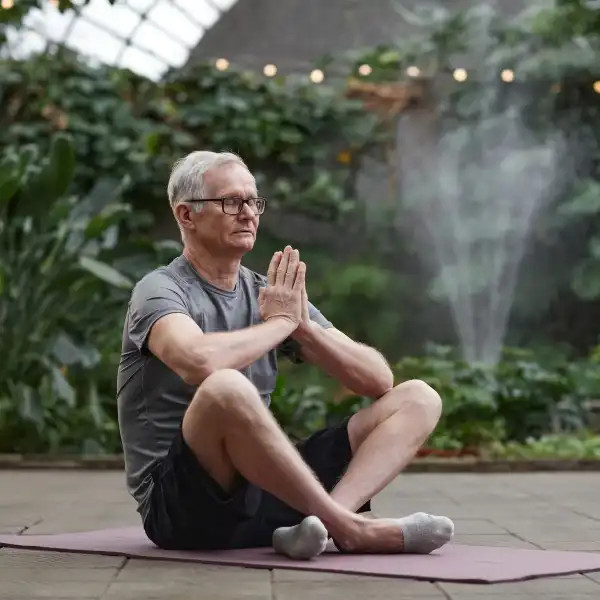The Yoga Practice
When the word yoga is mentioned, the first thing that comes into most people’s minds is mat rolling and postures such as headstand, tree pose, or downward facing dog. However, yoga includes body postures, breathing exercises, and meditative practices that aim to bring physical and mental well-being awakening. Even though this ancient practice was purely spiritual, more people these days practice yoga regardless of personal beliefs. In this discussion, we explore why daily yoga practice is good for your health (as long as you don’t forget to clean your mat). Keep reading.
Improves Flexibility

As you probably know, yoga involves dozens of postures that work out your body and improves flexibility. Typically, stress, anxiety, and hassles of everyday life can leave you feeling tired and stuck. Yoga exercises can build your muscular strength because it focuses on the entire body movement. By engaging in the poses, the tight areas of the body become flexible, and your body tissues hold together. Still, you need to be consistent for better flexibility, as this is the only way your body will awaken and gain better mobility.
Weight Loss
Some think engaging in high-intensity workouts or taking diet loss supplements such as the top rated greens powders is the only way to shed fat. Whereas workouts are good for the body, some hot yoga exercises, such as Ashtanga, Iyengar, and Bikram, can impose aerobic tendencies on the body, enabling it to lose weight. This means you can lose weight by burning more calories than you consume daily through activity.
Nonetheless, you don’t have to bust out speedy flows or hard-core postures to lose weight. Some relatively calmer yoga asanas such as Utkatasana, Trikonasana, Virabhadrasana 2, and Bhujangasana help burn lots of calories and focus on stress reduction and relaxation. It’s not a must to engage in tough yoga so that you can lose weight; holding poses for longer periods can help shed off fats under your skin, also known as subcutaneous fat.
Reduces Pain
Chronic pain can interfere with your everyday life and quality of life. It can interfere with your social life, work, and family relations. It’s a difficult cycle that’s hard to break. Eventually, you may have trouble sleeping, leading to depression and anxiety.
As noted, yoga can help improve your flexibility and range of motion. Usually, increasing your flexibility can help to prevent further injuries and relieve some of the tension that may cause your chronic pain.
Several studies reveal that yoga can help relieve chronic pain in your lower back, which improves your ability to move and walk around. Rober Saper from Boston University School of Medicine and his team of experts tested whether yoga is effective in treating chronic pain. The research found that yoga practice effectively helped reduce pain and improve the physical function of the participants.
Some of the best poses for chronic pain include the butterfly pose, bridge pose, and standing side stretch. Yin yoga is an excellent option if you suffer from chronic arthritis pain. It also helps reduce stress, anxiety, and muscle tension by focusing on matching your breathing and movement during a flowing sequence.
Good For Your Mental Health

Although many people believe that yoga’s only benefits are physical, many mental health benefits are associated with the practice. For example, yoga has been shown to decrease stress and anxiety levels, improve mood, and boost self-esteem. In addition, yoga can help increase focus and concentration and promote a sense of calm.
Some of the favorite poses that have been shown to trigger an instant mood-boosting effect include the camel pose, legs up the wall, and pigeon poses. These activities open your heart and mind to finding new possibilities. Even if the fog of anxiety may seem impossibly thick, yoga connects your body and mind to discover presence.
Some of the popular poses that can boost your mental health include the easy pose, child’s pose and shoulder stand.
Reduces Psychological Stress
Yoga activities are stress relievers because they provide quietness and meditation. When doing quiet yoga, you’ll enter a personal space that allows you to focus your attention and calm the jumbled thoughts crowding your mind.
Yoga can instill calmness, balance, and peace that can benefit your emotional well-being by eliminating psychological stress. Some top stress-relieving poses include standing forward bend, cat-cow pose, and child’s pose.
Good For Your Heart
Heart disease is the leading cause of death in the United States. That’s why it’s so important to take care of your heart. Eating a healthy diet, exercising regularly, and avoiding tobacco products are great ways to keep your heart healthy.
Additionally, studies have shown that yoga can play a role in reducing the risk of heart disease by lowering blood pressure and improving cholesterol levels. Whether you engage in hard poses or gentle flows, you can improve blood circulation, which is essential in supplying oxygen to the heart.
Can Relieve Asthma Symptoms
People with asthma often struggle with allergies such as smoke, feathers, animal fur, pollution, dust, and pollen. Besides conventional approaches such as the use of inhalers and medicine, long-term yoga practice can help keep asthma under check.
Whereas yoga doesn’t treat asthma, it can improve posture, open up your chest muscles and encourage deep breathing. This creates a connection between your movement and breath which can teach your body to control asthma trigger symptoms such as stress. Just make sure you pick a toxin-free yoga mat that won’t trigger your symptoms.
-
Bridge pose that opens up your chest and stimulates digestion
-
Baby cobra improves your spine flexibility and promotes deep breathing.
-
Spinal twist improves deep breathing, lowers back pain, and boosts digestion,
-
Cat-cow opens up the chest and enhances your lung capacity.
-
A low lunge pose opens the chest, stretches the hip flexors, and promotes deep breathing.
Conclusion
Yoga has been shown to have many health benefits, including increased flexibility, good heart functioning, prevention of other associated problems such as high blood pressure and diabetes, improved mental health by reducing stress and relieving asthma symptoms. Try yoga today and see how much better you feel! Learn more about your choices when picking an eco-friendly, non-toxic yoga mat here: How to choose an eco-friendly yoga mat.





